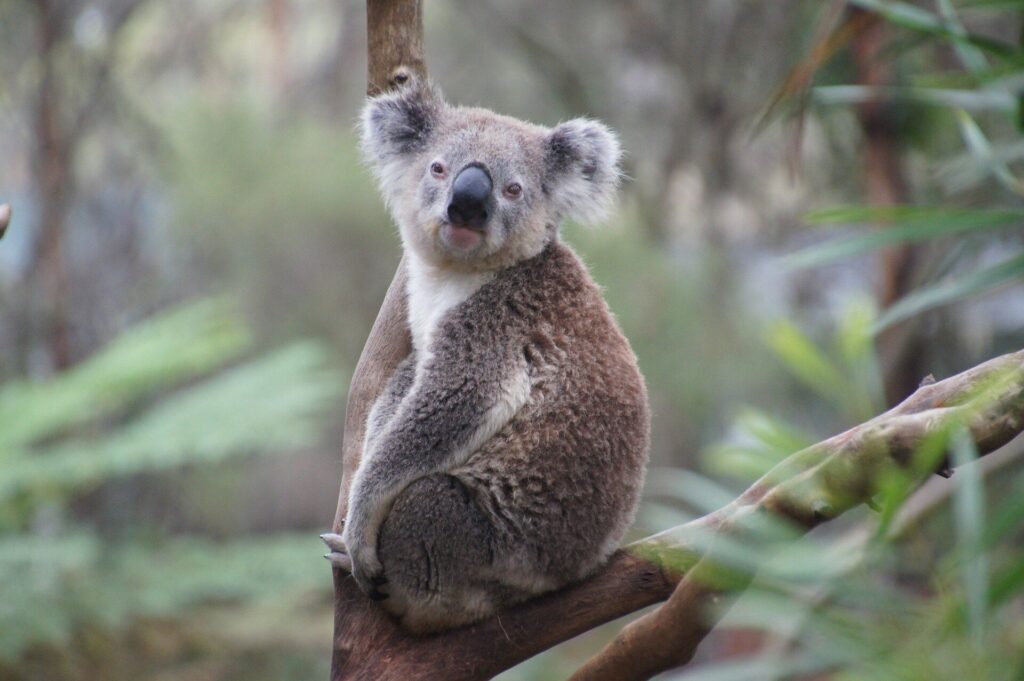
In a landmark development, a vaccine has been approved to protect Australia’s endangered koalas from the devastating effects of chlamydia, marking a significant milestone in conservation efforts. Developed by the University of the Sunshine Coast (UniSC), the vaccine’s approval by Australia’s veterinary medicine regulator represents a critical step in safeguarding the future of this iconic marsupial.
The vaccine, a decade in the making, was spearheaded by Professor Peter Timms and his team at UniSC. The disease, which can lead to severe health issues such as urinary tract infections, infertility, blindness, and even death, poses one of the greatest threats to koala populations across the country. Professor Timms emphasized the urgency of the situation, noting that some wild colonies face infection rates as high as 70%, pushing them closer to extinction.
Until now, antibiotics have been the primary treatment for infected koalas. However, they often disrupt the koalas’ ability to digest eucalyptus leaves, their sole food source, leading to starvation and, in some cases, death. The vaccine offers a promising alternative, aiming to reduce the rapid spread of the disease and protect vulnerable populations.
Fighting Chance: Pathway to a Vaccine
The development of the vaccine is backed by a decade of clinical data, including the largest and longest study of wild koalas. Dr. Sam Phillips, a senior researcher at UniSC, highlighted the vaccine’s effectiveness, stating that it reduced the likelihood of koalas developing symptoms during their breeding age and decreased mortality from the disease by at least 65%.
“The vaccine has been trialed on hundreds of wild koalas, others in captivity and wildlife hospitals, and over multiple generations,” Dr. Phillips said. “It’s based on Chlamydia pecorum’s major outer membrane protein (MOMP), and offers three levels of protection—reducing infection, preventing progression to clinical disease, and, in some cases, reversing existing symptoms.”
The vaccine’s design emphasizes operational feasibility, requiring a single-dose administration, crucial in wildlife management to minimize handling stress and logistical constraints for field teams.
Global Response to Koala’s Plight
The successful development of the vaccine was a collaborative effort involving global and national partners. The adjuvant used in the vaccine was developed by the University of Saskatchewan’s Vaccine and Infectious Disease Organization (VIDO), alongside contributions from the International Vaccine Institute, the University of British Columbia, and Dalhousie University.
Other collaborators, such as Morris Animal Foundation, Rane Pharma, and Ceva Santé Animale, played pivotal roles in overcoming hurdles to bring the project to fruition. Pierre-Marie Borne, Director of the Ceva Wildlife Research Fund, underscored the global significance of conserving the koala, a symbol of Australia’s natural heritage.
“This initiative transcends basic research; it represents a crucial intervention to safeguard endangered species and maintain ecological balance in Australia’s unique environments, serving as a model for similar conservation efforts worldwide,” Borne stated.
Implications and Future Steps
The vaccine is being produced in partnership with Tréidlia Biovet, an independent Australian-owned animal health company, and has been approved for production and distribution by the Australian Pesticides and Veterinary Medicines Authority. Despite this progress, Professor Timms acknowledged the need for further funding and donations to facilitate the national rollout of the vaccine for at-risk koala populations.
UniSC Vice-Chancellor and President Professor Helen Bartlett highlighted the university’s strategic focus on collaborative solutions to pressing ecological and health challenges. “This vaccine bridges the gap between discovery and real-world application, translating to a tangible, game-changing product that offers real hope for this endangered species,” she said.
As the vaccine moves closer to widespread implementation, it represents not only a triumph in veterinary science but also a beacon of hope for conservationists worldwide. The success of this initiative could pave the way for similar efforts to protect other endangered species, demonstrating the power of science and collaboration in addressing global environmental challenges.







